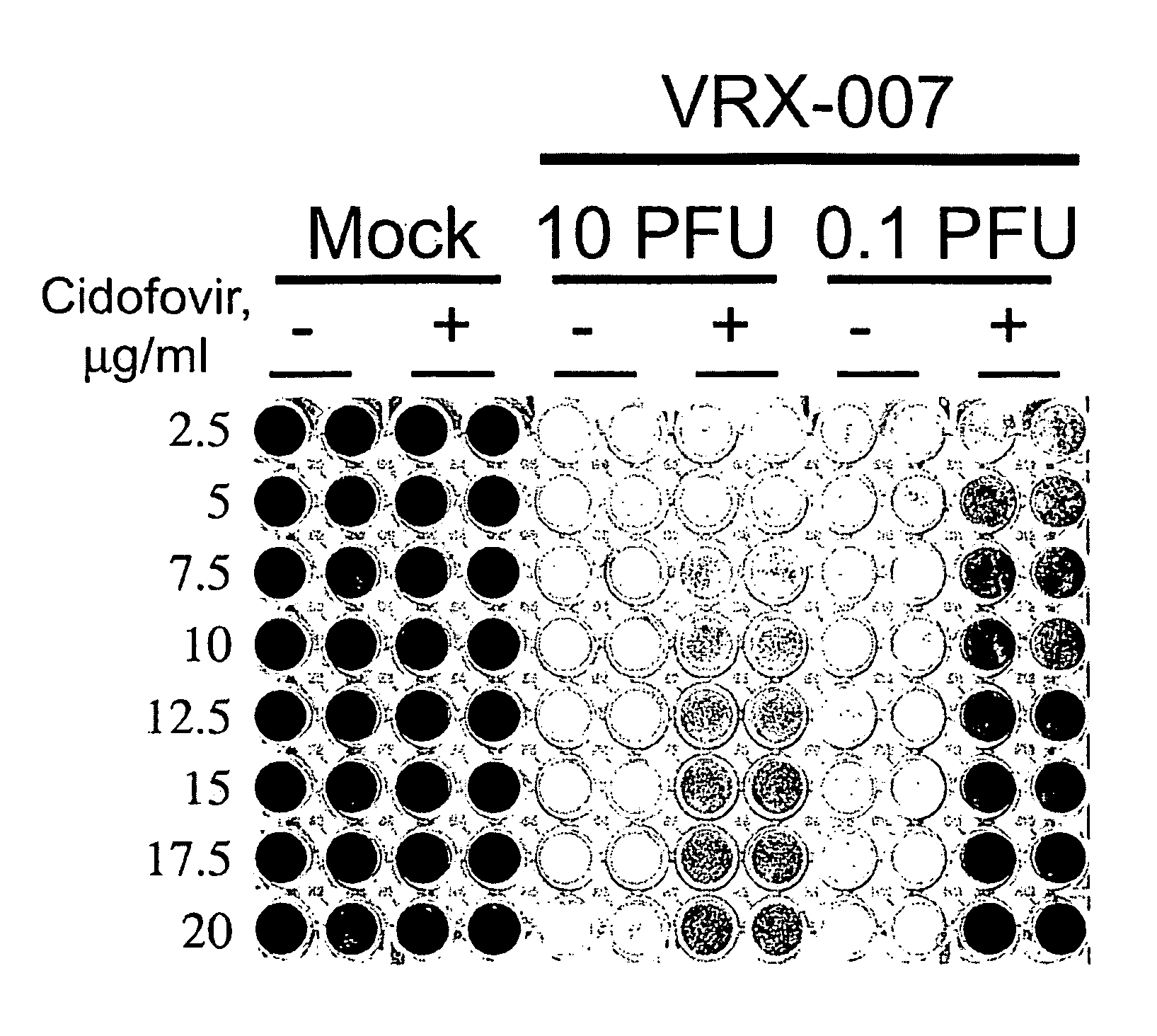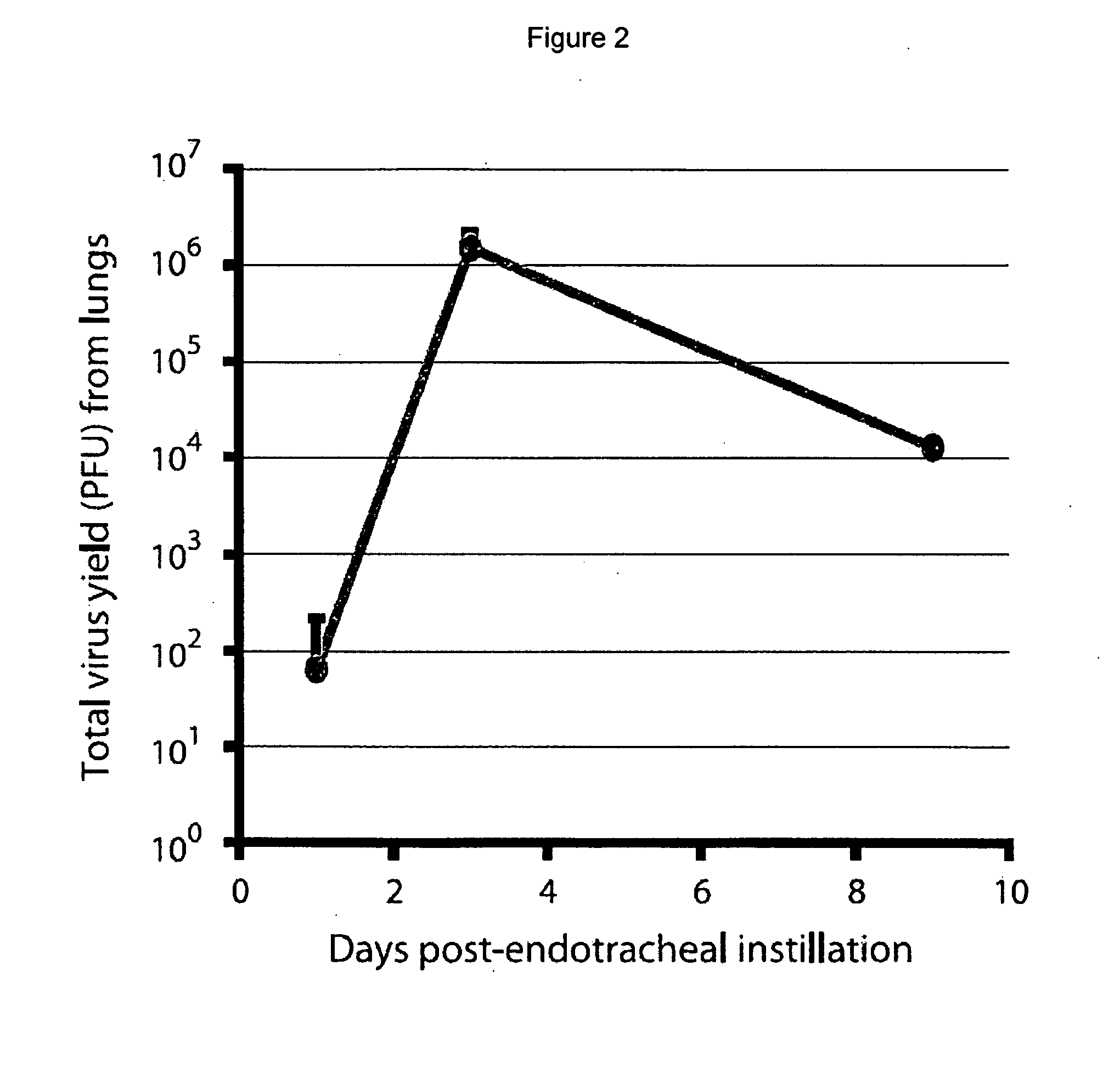Screening tool for antiviral agents
a technology of antiviral agents and screening tools, which is applied in the field of animal models, can solve the problems of no antiviral drugs approved to treat, no antiviral drugs to be used, and ineffectiveness, and achieve the effect of increasing the replication rate of ad5
- Summary
- Abstract
- Description
- Claims
- Application Information
AI Technical Summary
Benefits of technology
Problems solved by technology
Method used
Image
Examples
Embodiment Construction
[0081]The immunosuppression of Syrian hamsters using cyclophosphamide CP allows for remarkably high and prolonged levels of Ads replication in the tumors as well as in the liver and probably in other tissues.
[0082]The use of the Syrian hamster as a model to study the efficacy, biodistribution, and safety of replication-competent (oncolytic) Ad vectors for cancer gene therapy is provided. It had been shown previously that human Ad serotype 5 (Ad5) and Ad5-based vectors replicate surprisingly well in hamster tumors growing in hamsters following intratumoral injection of the viruses. These viruses also replicate well in the hamster livers, lungs, and other organs following intravenous injection (see Morin et al., PNAS 1987; 84; 4626-4630, Wold et al., U.S. Patent Pub. No. US2005 / 0201936, and Toth et al., Hexadecyloxypropyl-cidofovir, CMX001, prevents adenovirus induced mortality in a permissive, immunosuppressed animal model, PNAS May 20, 2008; vol. 105, no. 20, 7293-7297 which are her...
PUM
| Property | Measurement | Unit |
|---|---|---|
| time | aaaaa | aaaaa |
| time | aaaaa | aaaaa |
| time | aaaaa | aaaaa |
Abstract
Description
Claims
Application Information
 Login to View More
Login to View More - R&D
- Intellectual Property
- Life Sciences
- Materials
- Tech Scout
- Unparalleled Data Quality
- Higher Quality Content
- 60% Fewer Hallucinations
Browse by: Latest US Patents, China's latest patents, Technical Efficacy Thesaurus, Application Domain, Technology Topic, Popular Technical Reports.
© 2025 PatSnap. All rights reserved.Legal|Privacy policy|Modern Slavery Act Transparency Statement|Sitemap|About US| Contact US: help@patsnap.com



